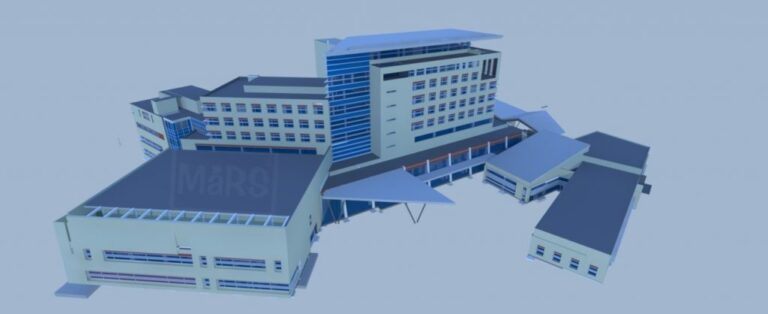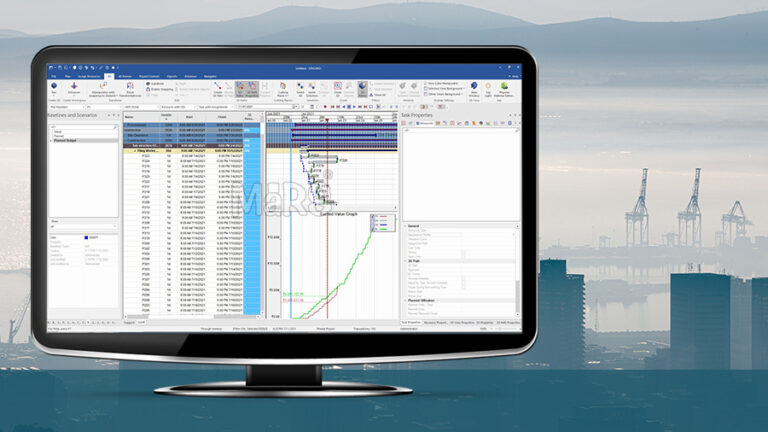Using the BIM Execution Plan to Integrate BIM Technology into the Design Process
With the introduction of Building Information Modeling (BIM) technology, the Digital Revolution is transforming the building sector. Throughout the construction process, BIM technology is employed to efficiently link all parties involved. Utilizing BIM technology in design processes necessitates the development of a BIM Execution Plan (BEP) that is tailored to particular tasks, settings, and building process players. To accomplish objectives and expedite the design process, this plan needs to be carefully thought out and controlled. This pattern emphasizes how crucial efficient management and procedures are in the building sector.
Buildings look better in virtual reality, and construction costs are lower when BIM services are included in the design phase. This technology proves to be useful, especially throughout building operations as opposed to only construction. This post will discuss the advantages of utilizing this technology as well as how the BIM Execution Plan is implemented during the design phase of a project.
What is the BEP, and What contributes to its Necessity?
An essential document for the effective implementation of BIM projects is the BEP. It describes procedures, models, and uses in addition to expectations for the usage of BIM, organizing techniques, and graphic representation. The BEP should be created early in the design phase and should change as the project progresses, outlining the roles and duties of participants, the BIM work process, and the BIM infrastructure. Insurance, liabilities, lifespan, technical order, data security, and collaborative procedures are just a few of the subjects it should address.
For BIM-based construction projects to be successful, the BEP is a necessary component. It maximizes workflow and guides the application of contemporary design technology. Adoption of BEP guarantees projects are finished on schedule and under budget, which is advantageous to all parties involved.
It makes managing and coordinating BIM projects easier and guarantees their timely completion. A well-organized BEP makes the tendering process easier by providing potential vendors with an understanding of the BIM standards and specifications for the project.
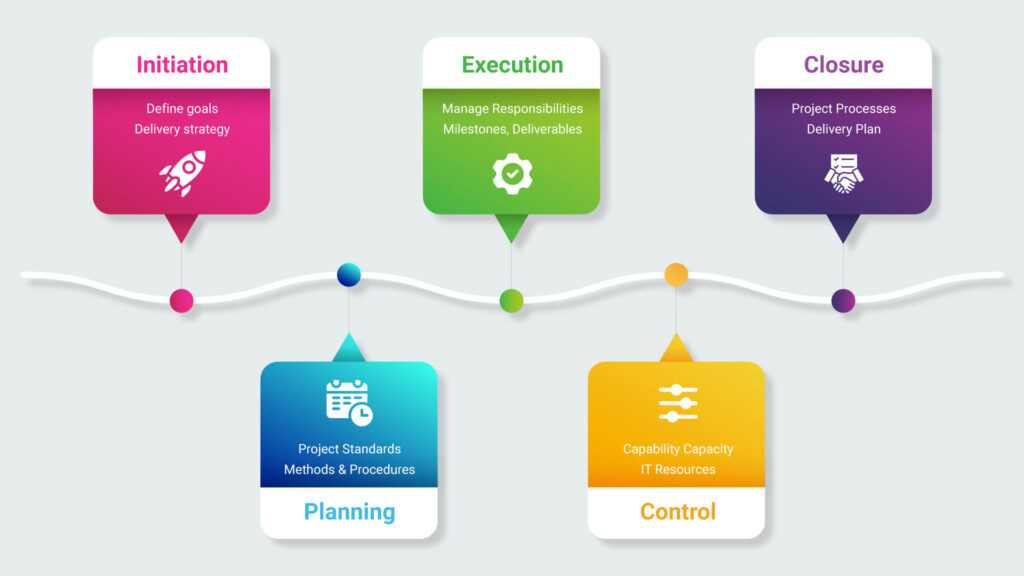
What Information Should be Included in the BEP?
Developed throughout the project design stages, the BIM Execution Plan describes the scope, process flow, BIM tasks, information exchanges, and required infrastructure for project execution, as well as the following information:
- Overview of BIM Data Management
- BIM file generation, administration, documentation, and sharing.
- Defining roles and duties in the BIM process.
- Key deliverables and project milestone strategy.
- Task Information, Delivery Plans, and Project Execution Plans.
- Specifics about working procedures and standard annotations, acronyms, and symbols.
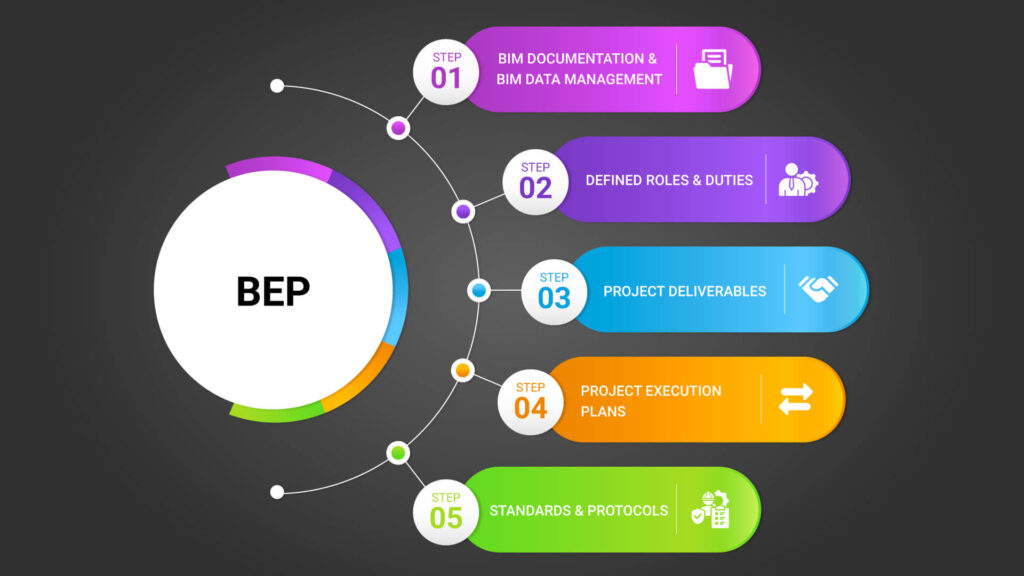
BIM Execution Plan Types
Pre-contract and post-contract BIM execution plans are of two types. Depending on the type, the information they carry will differ:
The pre-contract BIM plan is the initial plan provided during the tendering stage, and it details the supplier’s proposed methodology, capacity, and other aspects. Employer requirements can be addressed in a document such as Employer’s Information Requirements, or the provider can create them.
A Post-contract BIM plan is established after the contract is signed to ensure the capabilities of the supply chain and address any potential issues. The plan includes both individual Task Information Delivery Plans and an overarching master plan to clearly outline responsibilities for each aspect of information delivery.
The Advantages of Using BIM Execution Plan in the Design Phase
A well-structured BEP facilitates the identification of BIM potential, technology implementation across project phases, and benefits delivery to all project stakeholders. Benefits from its execution circulate to all project stakeholders:
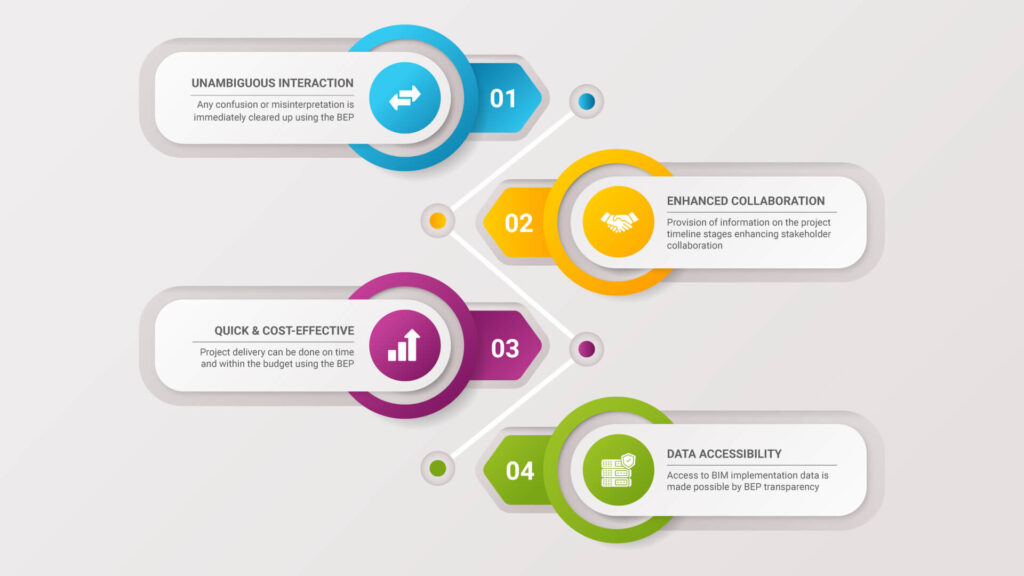
- Unambiguous Interaction – Team members interact with one another clearly and explicitly from the start of the project to handle their respective duties. Any confusion or misinterpretation is immediately cleared up, thanks to BEP.
- Enhanced Collaboration Among Stakeholders: The BEP document provides current information on the project timeline stages and structure, enhancing stakeholder collaboration. This improves the efficiency of the project team as a whole and makes task execution easier.
- Quick and Cost-Effective Delivery: A BEP aims to prioritize project benefits, streamline specifics, and ensure that stakeholders understand their roles and responsibilities. This minimizes the need for time-consuming project detail inspection and helps to guarantee that team members have clear goals.
- Data Accessibility: Access to BIM implementation data is made possible by BEP transparency, which guarantees that all project participants are aware of their respective roles and responsibilities. This increases the capacity to manage ambiguous and uncertain circumstances skillfully.

Wrapping Up
As a strategic framework for modern design technology, the BEP is an essential part of construction projects that succeed. All parties involved would profit from the timely and cost-effective project delivery that can be ensured by using BEP. Consequently, it can be said that the BEP is more than just a document because it helps teams navigate the challenges associated with implementing BIM.


